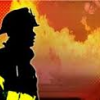Sign in to follow this
Followers
0

How Do You Benchmark Response Times?
Started by
LineCapt,
-
Recently Browsing 0 members
No registered users viewing this page.

Started by
LineCapt,
No registered users viewing this page.